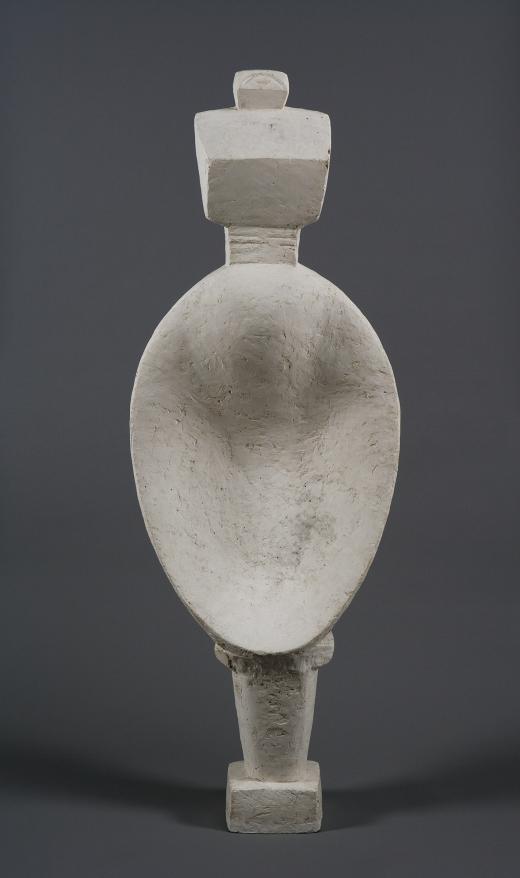THE ENCOUNTER WITH CUBISM IN PARIS
GALLERY 205
In 1922 Giacometti moved to Paris to study with sculptor Antoine Bourdelle at the Académie de la Grande Chaumière. He soon discovered the Post-Cubist works of Jacques Lipchitz, Henri Laurens, Constantin Brancusi, and Pablo Picasso, and this prompted him to abandon his classical training and adopt the formal vocabulary of Neo-Cubism with a very personal style centered on the human figure.
The ancient Greek statuary from the Cyclades that Giacometti saw at the Louvre inspired him to explore the relationship between sculpture and plane. He was also a frequent visitor to the Ethnographic Museum and an assiduous reader of avantgarde journals like Cahiers d’Art and Documents, which reflected the taste of the period for non-Western art. In 1927 these influences came together in Spoon Woman (1927). Made in plaster and afterwards cast in bronze, it is the most monumental and totemic of the works from this period. Giacometti here interprets the geometry characteristic of Cubism, the stylized forms of African art, and the formal simplicity of European modernism. With a large concave abdomen suggesting a female uterus, the sculpture, a tribute to fertility, is inspired by the anthropomorphic ceremonial spoons of the Dan culture of Africa. Giacometti’s sculptures grew increasingly abstract and complex until they culminated in flattened, volumeless forms whose polished surfaces are lightly sculpted or engraved. This is appreciable in Gazing Head (1929), a flat piece of plaster that presents a subtle, almost imperceptible cavity evoking an eye. These pieces were exhibited in Paris in 1929 and aroused the interest of prestigious artists and intellectuals like Georges Bataille, André Breton, and Salvador Dalí.

